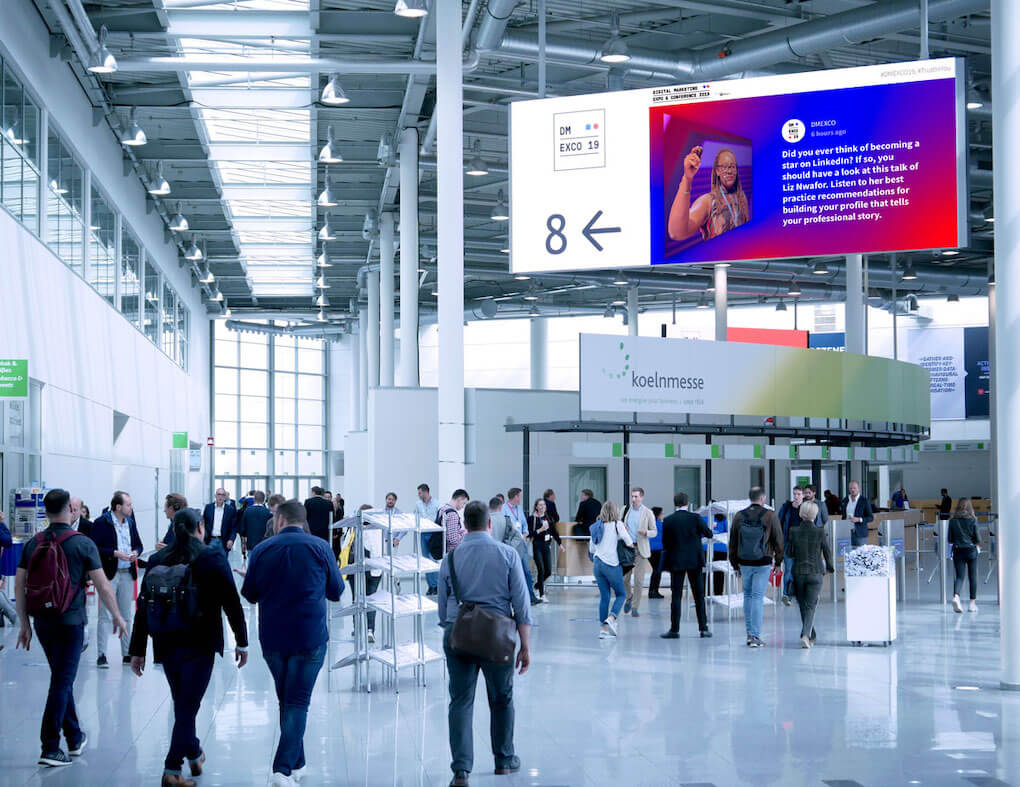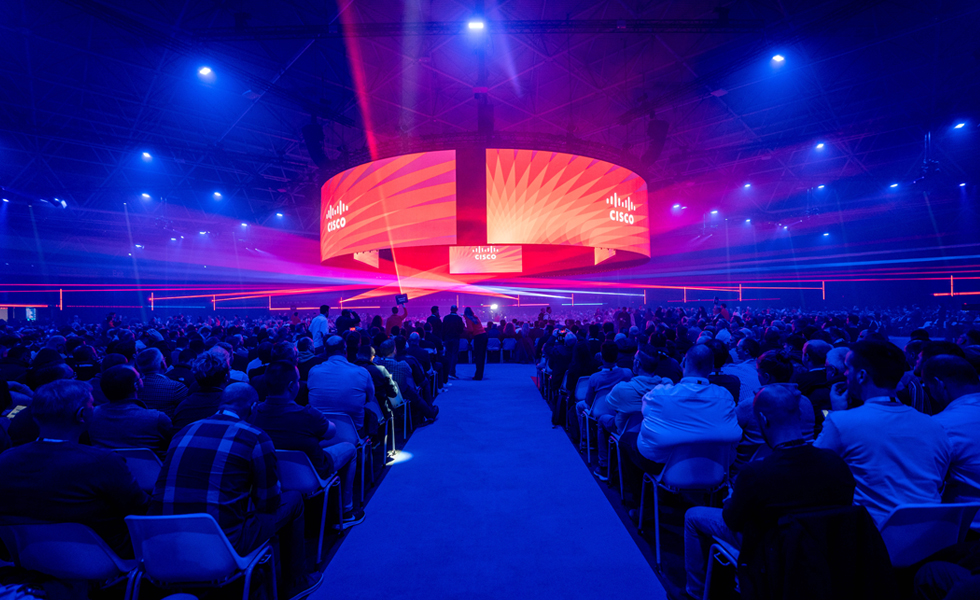In 2023, continuous audience engagement is a major priority for modern event planners.
Crafting a personalized attendee journey with multiple points of engagement on every event stage is essential to creating an immersive, memorable event experience. Attendees who start interacting early and continue to do so during the event are more likely to participate in different activities, ask questions, actively connect with other professionals, and, later on, advocate for your events and community through positive feedback.
But in today’s world, virtual event fatigue has made it difficult to maintain an ongoing audience engagement at virtual and hybrid events. But don’t worry, event organizers can leverage user-generated content (UGC) to create an ongoing dialogue between businesses and their audiences, all while maintaining genuine human interactions in a digital environment.
Incorporating UGC into your event engagement strategy allows you to turn attendees into content creators and design equal opportunities for virtual and in-person audiences to interact and connect.
From the audience’s perspective, content creation is a fun activity that allows them to contribute to the conversation and engage with content created by others who share similar interests. For some attendees, posting online might help build their personal brand and establish themselves as industry experts.
For event organizers, encouraging content creation drives increased audience engagement and helps build excitement and anticipation before the event starts. Plus, having a designated spot for attendees to share content fosters a sense of community after the show is over.
Here are some of the best strategies to incorporate UGC into every stage of your event experience.
Go social
This is probably the most obvious step since 89% of event planners already use social media for pre-event engagement. But what can we say? It works every time!
Social media is considered the best source of user-generated content because of its widespread use, accessibility, and real-time nature. It provides a platform for attendees to engage with each other and the event organizers by creating content around the event with familiar tools.
According to Skift Meetings, the best social channels to build a community and for year-round engagement are Facebook (57%), LinkedIn (25%), Twitter (7%), and Instagram (7%).
Pro-tip: make sure you remind your audience to tag your company page when they post about your event on social media platforms. It’ll make it easier for you to collect, track, and share those posts to boost brand awareness.
Use hashtags
No matter what platform mix you choose, make sure to bundle all online conversations around the event with a hashtag before your event starts. Event hashtags help you aggregate everything you and your attendees post about the event and give your audience a straightforward way to communicate with you and about your event at all times.
When you choose a hashtag for your next event, you want to go for something simple yet unique. Try to incorporate the event name or year. Consider using unique words or puns to make your hashtag more memorable. And always remember to run a quick Twitter search to check if the hashtag is already in use and ensure it’s not associated with negative content.
If you’re hosting a hybrid event, try to include local hashtags as well to make the event searchable for people who want to attend in person.
Once you choose your event hashtag, make sure to promote it across your brand’s channels to raise awareness among your audience. Include it in your social media posts, newsletters, marketing collateral at the venue, and the rest of the event materials. Also, encourage speakers, exhibitors, and sponsors to post about the event weeks before the event takes place.
Why? So you can later collect and repurpose all of the user-generated content that your attendees and partners have created!
Set up a social wall
An event social wall allows you to display content posted by attendees and speakers on different social media platforms in a unified feed. It serves as a social hub and can be embedded on event websites, apps, and next to live streams to encourage conversations and content creation.
Putting your social wall front and center during the event provides a much-needed spotlight for your community. It helps eliminate the vacuum that keeps people apart during virtual and hybrid events, with attendees not knowing what others are doing and talking about.

By collecting and displaying content that people marked with event hashtags, you, as an organizer, create a safe space where their thoughts and ideas are valued. An event social wall often serves as a platform for everyone to come together as a community and helps you transform your attendees into active participants in your event.
Pro tip: Transform your Walls.io social wall into a dedicated feature within Webex Events by integrating it directly through the Web link feature. Not only can you showcase your social wall during a session or live stream, but you can also elevate the experience by integrating your Snapbar selfie booth with your wall.
Incentivize attendee participation with prizes
User-generated content serves as social proof that your audience enjoys the event experience your team has developed. Your brand becomes more relatable and humanized with real people sharing their experiences and perspectives. So why not reward them for it?
Launching a giveaway not long before the event date can help you level up the event exposure and attract new potential attendees. Event planners can encourage the creation of user-generated content and increase the event’s visibility by offering a prize or incentive for completing a specific task, like sharing which session they’re most excited about.
During an event, a well-designed contest can serve as an interactive break between the sessions. Make sure it’s easy to enter, has clear rules, and engages people in a fun way. For example, you can ask your attendees to post a selfie from where they’re joining the event directly on a social wall or invite them to Tweet their favorite quotes from speakers. The better you know your audience, the more creative you can get with your contest or giveaway ideas!

The great thing about UGC contests is that they allow you to engage audiences on multiple levels and set up a community-led event experience if you give the power of picking the winner to the audience. One of the ways to do so is to set up a live poll right on the event social wall and let people vote for their favorite picks.
If you’re incorporating an event game, consider tying a game challenge to a specific action. For example, if attendees post a selfie to the social wall, you can give them a game code that they can redeem for points. This encourages attendees to share their own posts and promotes some friendly competition.
Go beyond social media
We previously talked about how it’s important to create equal opportunities for everyone to contribute to the event content creation. However, event planners shouldn’t forget people who can’t or won’t use their personal social media profiles – or individuals who don’t use social media.
Luckily, user-generated content doesn’t limit itself to social media.
It can come in the form of a selfie from an integrated virtual photo booth, a direct message in a social feed, or the results of a live poll. Focus your engagement strategy on interactive elements that allow attendees to influence event content in real-time to collect truly unique UGC.
Fuel your year-round event strategy
Don’t let your marketing efforts and all the user-generated content they helped generate go to waste after the event has ended. Instead, find ways to repurpose and serve it back to the audience across all of your marketing channels.
Marketers love UGC because it helps increase trust and the brand’s credibility, max out the reach and lead to more sales or future event registrations. A thousand positive reactions can serve as valuable evidence of a successful event to your future attendees and sponsors.
You can weave UGC into post-event communication and endorse the event recap campaign with attendees’ statements, video clips, and social media posts. The key here is to continue the dialogue by initiating a steady trickle of repurposed user-generated content and showing appreciation for your audience.
Suppose your goal is to foster a sense of community between virtual and hybrid events. In that case, you can keep your event website active with live social feeds that will keep collecting content from your own channels and create connection points for your community.
Create an immersive event experience with user-generated content
By investing in a UGC-focused engagement strategy and offering multiple ways to create content, you let attendees take charge and connect in an authentic way through every stage of the event.
Make sure to use tools like a social wall to collect all UGC around your event in one place, moderate it in real time, and introduce alternative content sources throughout the attendee journey.
The more effort you, as an organizer, put into making content creation an intentional part of the attendee’s journey, the easier it will be for your audience to connect, whether they’re joining the event virtually or in person.





